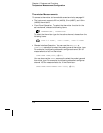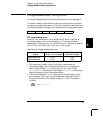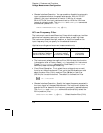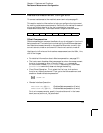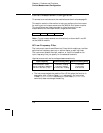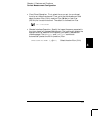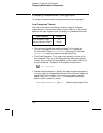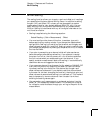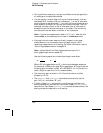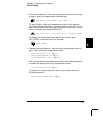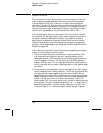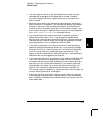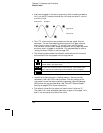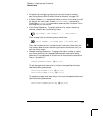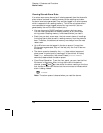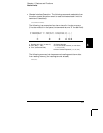
• During a Monitor operation, the gain and offset values are applied to
all readings on the specified channel.
• You can specify a custom label with up to three characters. You can
use letters (A-Z), numbers (0-9), an underscore ( _ ), or the “#” character
which displays a degree symbol (
° ) on the front panel (displayed as a
blank space in an output string from the remote interface). The first
character must be a letter or the “#” character (the “#” character is
allowed only as the leftmost character in the label). The remaining
two characters can be letters, numbers, or an underscore.
Note: If you set the measurement label to
°C, °F, or K, note that this
has
no effect on the temperature units set in the Measure menu.
• Although the instrument does not directly support strain gage
measurements, you can measure a strain gage using a 4-wire
resistance measurement with scaling. For more information, refer to
“Strain Gage Measurements” on page 373.
Note: Agilent BenchLink Data Logger software has built-in
strain gage measurement capability.
Use the following equations to calculate the gain and offset.
M =
1
GF x R
0
B =
−
1
GF
Where GF is the gage factor and R
0
is the unstrained gage resistance.
For example, a 350
Ω strain gage with a gage factor of 2 would use the
following gain and offset values: M=0.001428571, B=
-
0.5 (be sure to
use 6
1
⁄
2
digits of resolution for this measurement).
• The maximum gain allowed is ±1E+15 and the maximum offset
allowed is
±1E+15.
• The MEASure? and CONFigure commands automatically set the
gain (“M”) to 1 and offset (“B”) to 0.
• A Factory Reset (*RST command) turns off scaling and clears the
scaling values on all channels. An Instrument Preset (SYSTem:PRESet
command) or Card Reset (SYSTem:CPON command) does not clear the
scaling values and does not turn off scaling.
Chapter 4 Features and Functions
Mx+B Scaling
120



